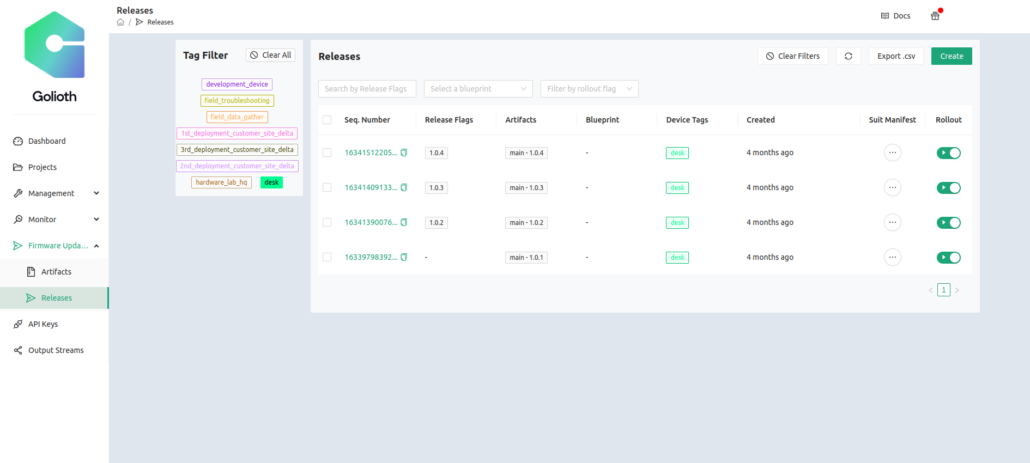Implementing remote firmware updates is one of the most critical steps towards building a resilient IoT deployment. In short: it allows you to change your device firmware in the field without being physically present with the device. This can be critical for security fixes, for feature upgrades, and for extending the lifetime of your IoT implementation. Today we’re going to be looking at Over-The-Air (OTA) firmware updates (DFU) for the Nordic Semiconductor nRF9160 cellular module (SIP). The associated video explanation and walkthrough (below) was published on our YouTube channel a couple months ago, but we’re reviewing it on our blog today.
Why are IoT firmware updates difficult?
There are many difficult components to OTA DFU, including on the system design level, at the device level, and on the hosting service. At a system level view, the hard part of a firmware update is knowing which device should be receiving the update. From the device perspective, it’s critical to be able to recover from any issues during the update and then verify the complete update was received; using cellular as the method of connectivity means there may be intermittent connectivity. With embedded devices, there are fewer ways to have a device intelligently recover, as may be the case with a full Linux system. On the cloud side, having a reliable hosting and delivery system for firmware packages is also important. Simply sticking files on a FTP server represents a security risk and puts an outsized burden on the logic of the device in the field.
Firmware updates are easier with Golioth
Golioth provides a data pipe to cellular devices and other devices in the Zephyr ecosystem as a one stop shop for all data connectivity. This includes state data handling (digital twin), data streams coming back to the cloud, and logging. Once that data pipe is established, we can also push firmware updates down to devices utilizing transport layers like CoAP.
We also benefit from the fact that the Zephyr project utilizes MCUBoot as the default bootloader. This open source bootloader (to which we are contributing members!) makes it easy to interact with from within an application. It’s as simple as pushing an updated firmware binary into memory and then calling an API to use that code upon reboot. Our recent blog posts around the ESP32 showcased how the newly-published port of MCUboot to the ESP32 platform enabled DFU on those parts. The Nordic Semiconductor nRF9160 has had this capability from the beginning because of its deep integration in the Zephyr ecosystem.
A key point shown in the video below is the signing of images using MCUboot. Having a signed firmware binary means there is a way to check that the entire package is there. From a security perspective, the signing allows the device to validate that the firmware image that has arrive is secure and unchanged in transit.
Managing firmware rollout
The Golioth Console enables our users to manage a wide variety of devices in their IoT fleet. A deployment with 10,000+ devices would be difficult to manage using scripts alone. Withouth the ability to visualize which devices have been updated or not means there is higher likelihood of costly mistakes.
To aid in partitioning device deployments, users can tag devices to create logical representations of different groupings. You might use a tag to identify some devices as early recipients of a test firmware image. Blueprints can be used to group devices that match a certain hardware profile. In this way, Golioth users can target key portions of their device fleet to ensure that only those specific devices are being updated at any given time.
Artifacts and Releases
Golioth implements two distinct features that will allow for more complex firmware packages. The first is an Artifact. this is simply a binary that is uploaded to the Golioth cloud. For your security, Golioth has no knowledge of what is inside that image, only how it has been signed. As such, this might be a firmware image, a JPEG that will be displayed on a smart screen. An artifact can also be a binary blob being delivered to a device modem, or even firmware that’s being pushed down the line to other microcontrollers in the system. Each of these artifacts can be versioned and assigned a blueprint, so that they can only be deployed onto the eligible systems.
The second feature is the idea of a Release. Users can take individual Artifacts and bundle them together as a Release. For example, a Release might have an image to display on the screen, the base application firmware for the device we’re targeting (the nRF9160), and a firmware image for an auxiliary processor on board (e.g., an nRF52). Once the user is ready to deploy, they create a Release with matching tags and blueprints and an assigned Release version. Devices in the field that match the criteria set by the user on the console (tags, blueprints) will then be notified that a new device firmware release is available for them. The device in the field will start the firmware update process, downloading chunks of data.
Once the image is verified as complete, the device will utilize the MCUBoot API on the device and restart using that new image. In the event the Golioth user wants to roll back changes, they simply slide a switch on the Golioth Console and the device is alerted to download/restart the previous version of firmware. In this way, Golioth users have the ultimate flexibility for delivering firmware devices to a laser focused set of devices in their fleet.
Watch the demo
See this all happening in real time, including compiling a new firmware image, uploading it to the Golioth Console and watching the OTA DFU happen on the nRF9160.


